Gl Georg Ludwig From Oeynhausen (1734-1811): Documents Nienburg 1802
GL Georg Ludwig von OEYNHAUSEN (1734-1811): Documents NIENBURG 1802 promissory notes
description
– More pictures see below! –
You are bidding on one Lot of documents (Nienburg 1802) of Electoral Brunswick-Lüneburg lieutenant general Georg Ludwig von Oeynhausen (1734-1811), chief of the 7. cavalry regiments (dragoons) and founder of the line of the counts of Hamelin.
Concerns mainly debts of GL von Oeynhausen; His fiefdom Bierde near Walsrode, which he owned since 1800 and on which he also died, is mentioned several times.
"As a result, he (Georg Ludwig von Oeynhausen) lived on the small estate of Bierde in Lüneburg, which was given to him on April 22. April 1800 after the extinction of the Fulda family as a completed fiefdom on the basis of a August 1772 Lehnsexpectanz was granted. The same was confiscated by the Westphalian government after his death, later given to a gentleman from Ende and now belongs to the gentleman from Arnswaldt." (Source: Julius Graf von Oeynhausen: History of the von Oeynhausen family, Volume 3, Frankfurt aM 1889, p. 273.)
It is unclear whether the Bierde fief was the Bierde Castle, which was also owned by the von Fulda / Fulde family until 1798.
1.) Statement signed by Georg Ludwig von Oeynhausen, dated Nienburg, 17. July 1802.
"Hereby Herr Ober-Krieges-Commissair Soest is requested to pay to Herr Ober-Commissair Meineke for the royal hospital cash those [...] five hundred and sixty Reichsthaler in cash money, which royal hospital cash as first-year revenues{? } due to the fiefdom Bierde, which was most graciously entrusted to me, certifying receipt of this sum from the above-mentioned Mr. Ober-Commissair, and the same then to the 7th Cavalry regiments in the fee statement decourt me."
Hand signed "GL Grf. v. Oeynhausen, Lieutenant General."
With acknowledgment of receipt: "Received. HL Meineke."
Scope: 1 p. (31 x 20.5 cm).
2.) Unsigned statement by GL von Oeynhausen, autograph concept, also dated Nienburg, 17. July 1802.
Excerpts: "After that I have assigned the revenue from my fiefdom Bierde to Lieutenant Luhmann of my governing regiment for the next four years in such a way that he will receive it immediately, use it for the specific purpose and should soon calculate it with me; this will be done The Herr Doctor and Chief Appeals Court Procurator Winter hereby requested that the entire surplus from the administration bill for the Bierde estate [...] be sent directly to the intended Mr Lieutenant Luhmann."
Scope: A right-column written folio page.
3.) Unsigned declaration / promissory note from GL von Oeynhausen, autograph concept, also dated Nienburg, 17. July 1802.
Excerpts: "I signed the certificate of General Lieutenant Georg Ludewig von Oeynhausen and hereby confess for myself and my heirs that weyl. Kaufmann's widow, Dorothea Sophie Friederique, née Langen, who died in his estate, Mr. Johann Philipp Bollmeyer [...] gave me a capital of 3000 rthlr at my request. I borrowed three thousand Reichsthaler [...] and paid it out in cash today. As I not only received sothane's capital correctly, but also immediately used the same to pay my still unsatisfied creditors", he assures that he will meet the agreed repayment dates and gives his entire assets as security, in particular the allodium of the Bierde estate .
In addition, Lieutenant Luhmann agreed to guarantee this loan.
Scope: 5 ½ single-sided folio pages.
4.) "Bill with Mr. Lieutenant Luhmann because of the loan sir Excellency, of Mr. Lieutenant General von Oeynhausen ad 3000 rth."
Scope: 1 ½ Pages (33.5 x 20.5 cm).
As an encore, another document by Georg Ludwig von Oeynhausen, dated Nienburg, 14. August 1800, however present in a contemporary copy by someone else.
GL von Oeynhausen borrows from Majorin von Oeynhausen, nee. Röder von Diersburg "the sum of two hundred important pistols, of which I have received one hundred in cash today and the second hundred have been paid to the Chamber President, Count von Kielmannsegge, at my request."
Scope: 1 ½ written pages (31 x 19.5 cm).
The Major von Oeynhausen is Sophie Freifrau von Oeynhausen, b. Röder von Diersburg (1761-1847), canoness in Beckenhorst, married to Major Friedrich Freiherr von Oeynhausen (1748-1823) in Merlsheim and daughter of Wilhelm Röder von Diersburg (1722-1772), Page and Hofstallmeister in Darmstadt, Oberstallmeister, Oberhauptmann, and Luisa Röder von Diersburg, b. Countess of Wartensleben (1722-1781), lady-in-waiting to the Hereditary Princess, later Landgravine Wilhelm of Hesse-Kassel.
Condition: Paper somewhat stained, partly stronger at the edges, with slight edge damage, ins. Well. The third document slightly trimmed. Please also note the pictures at the end of the item description!
Internal note: Oeyn6712-white
pictures



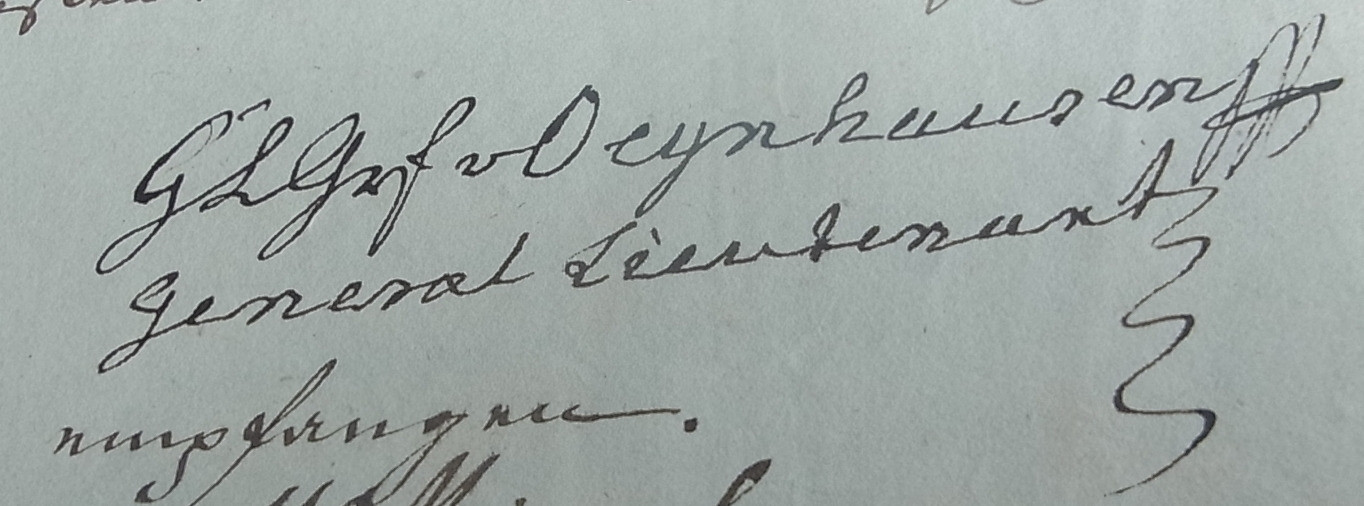

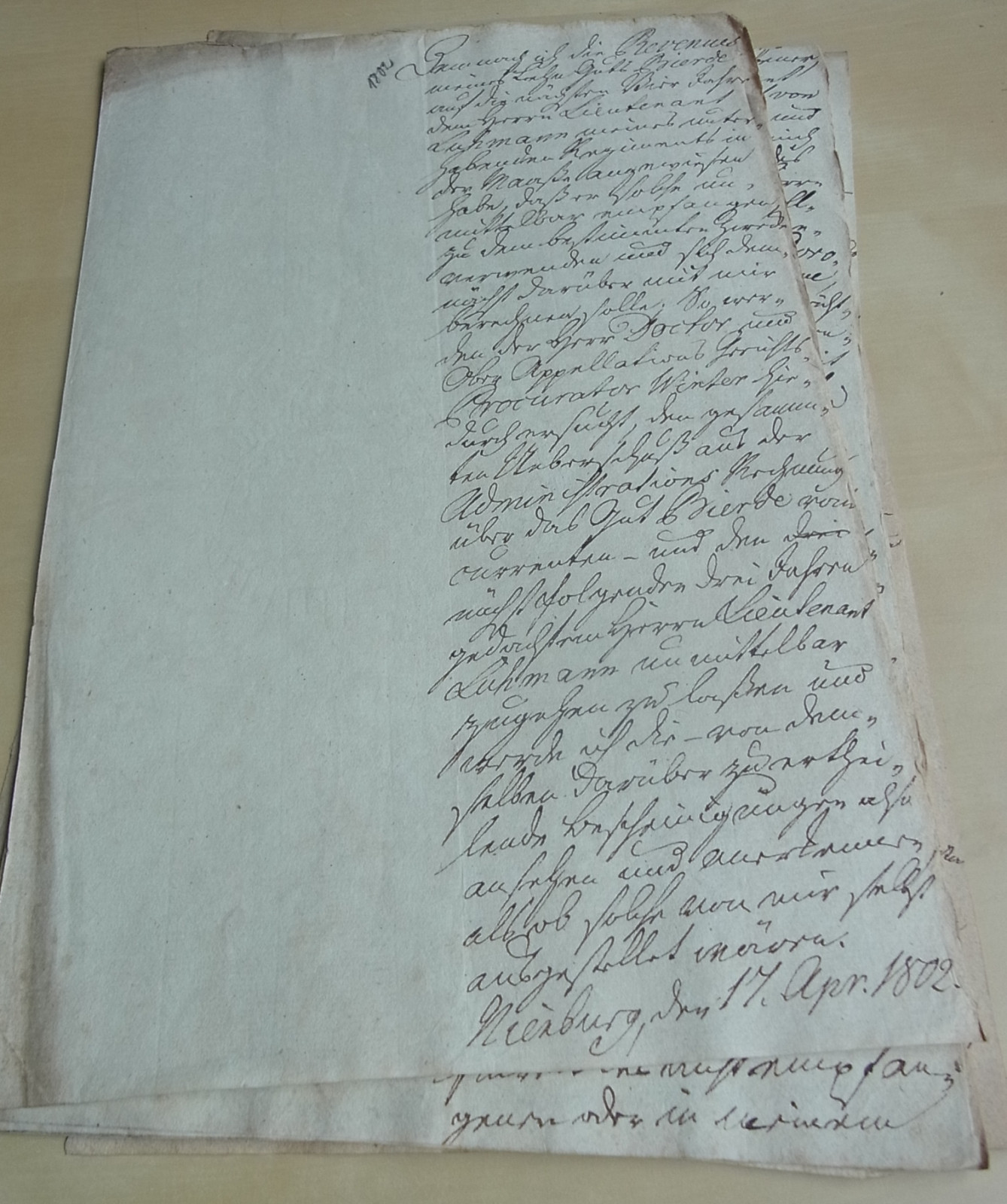
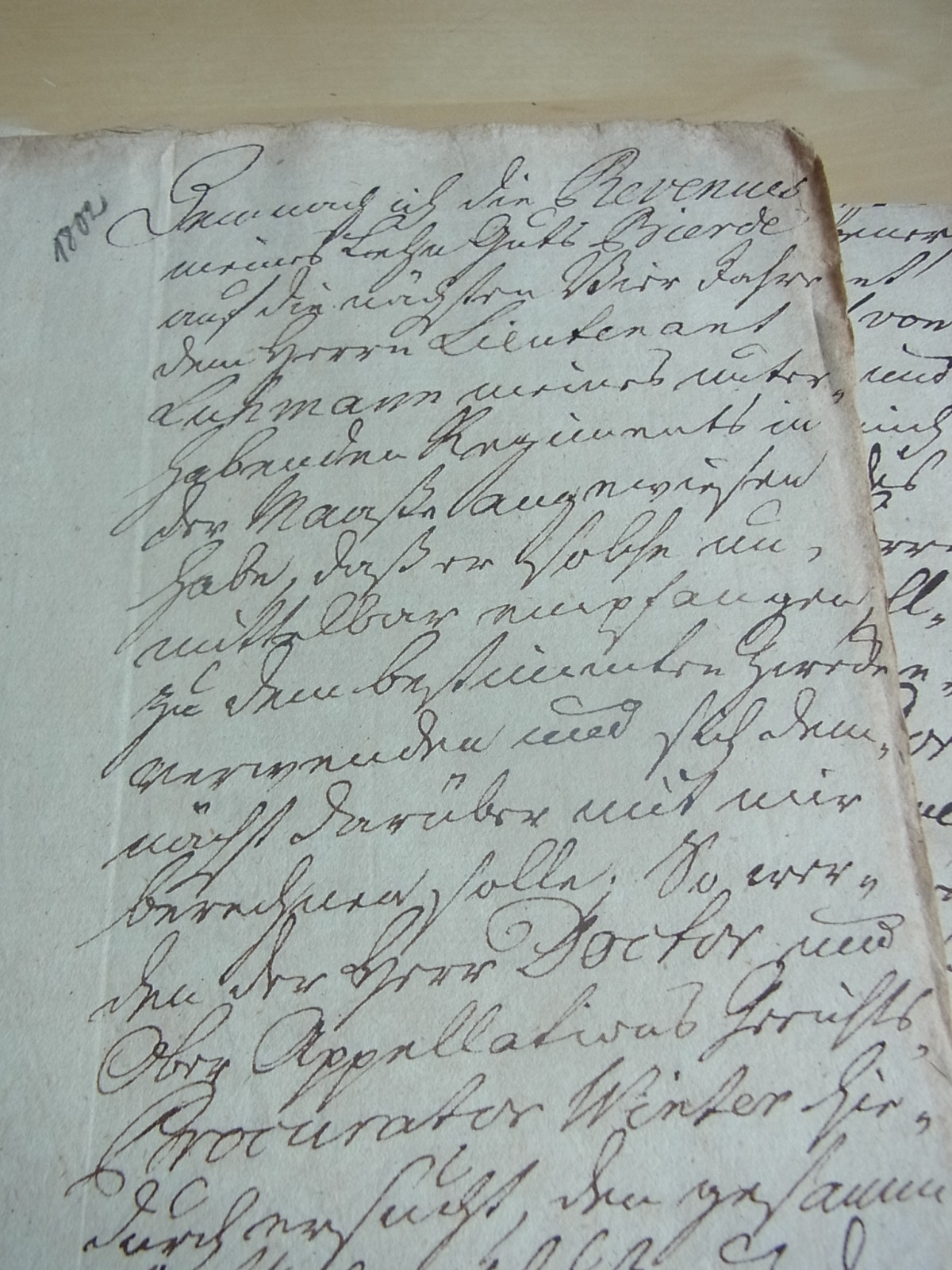
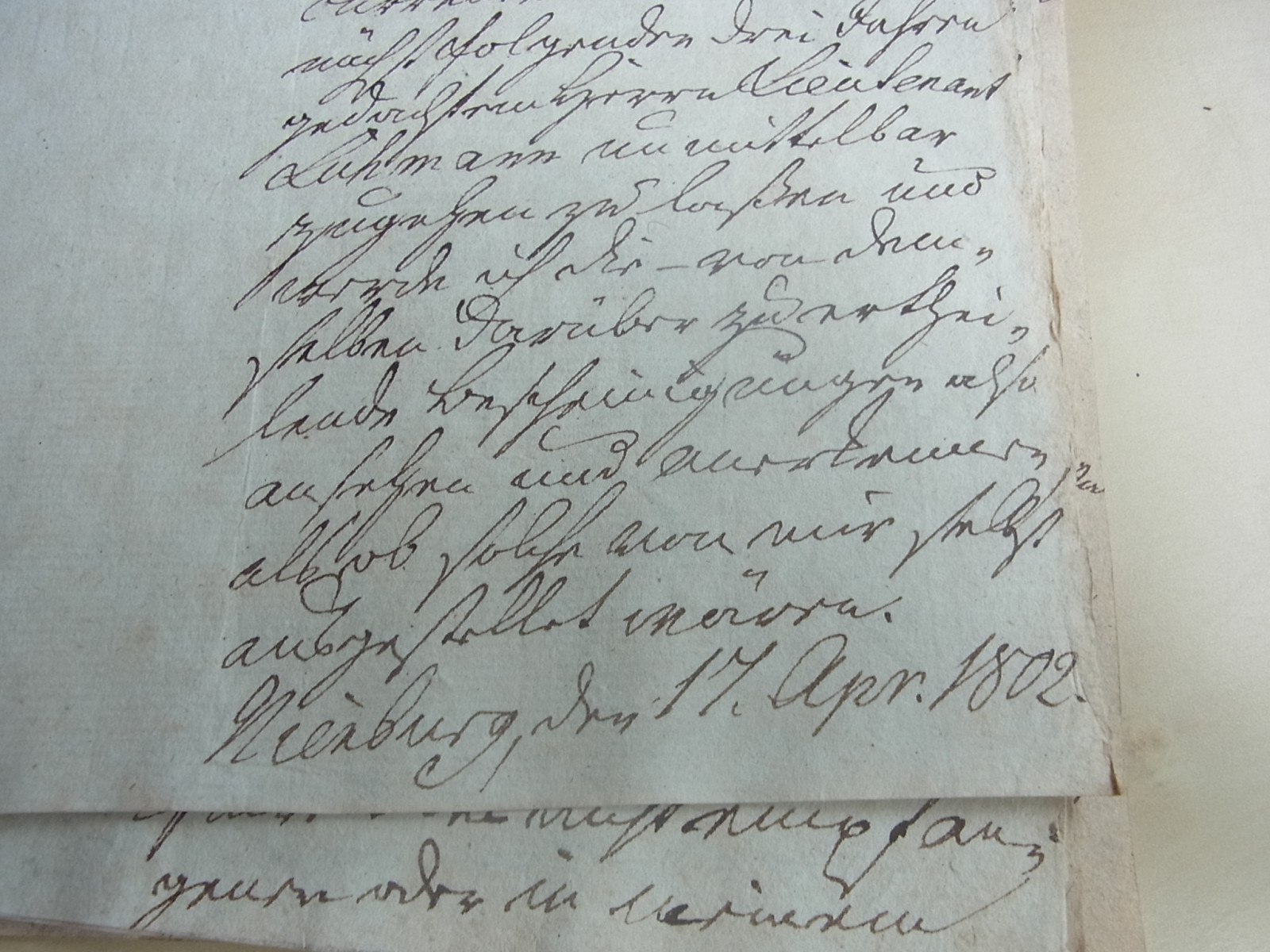
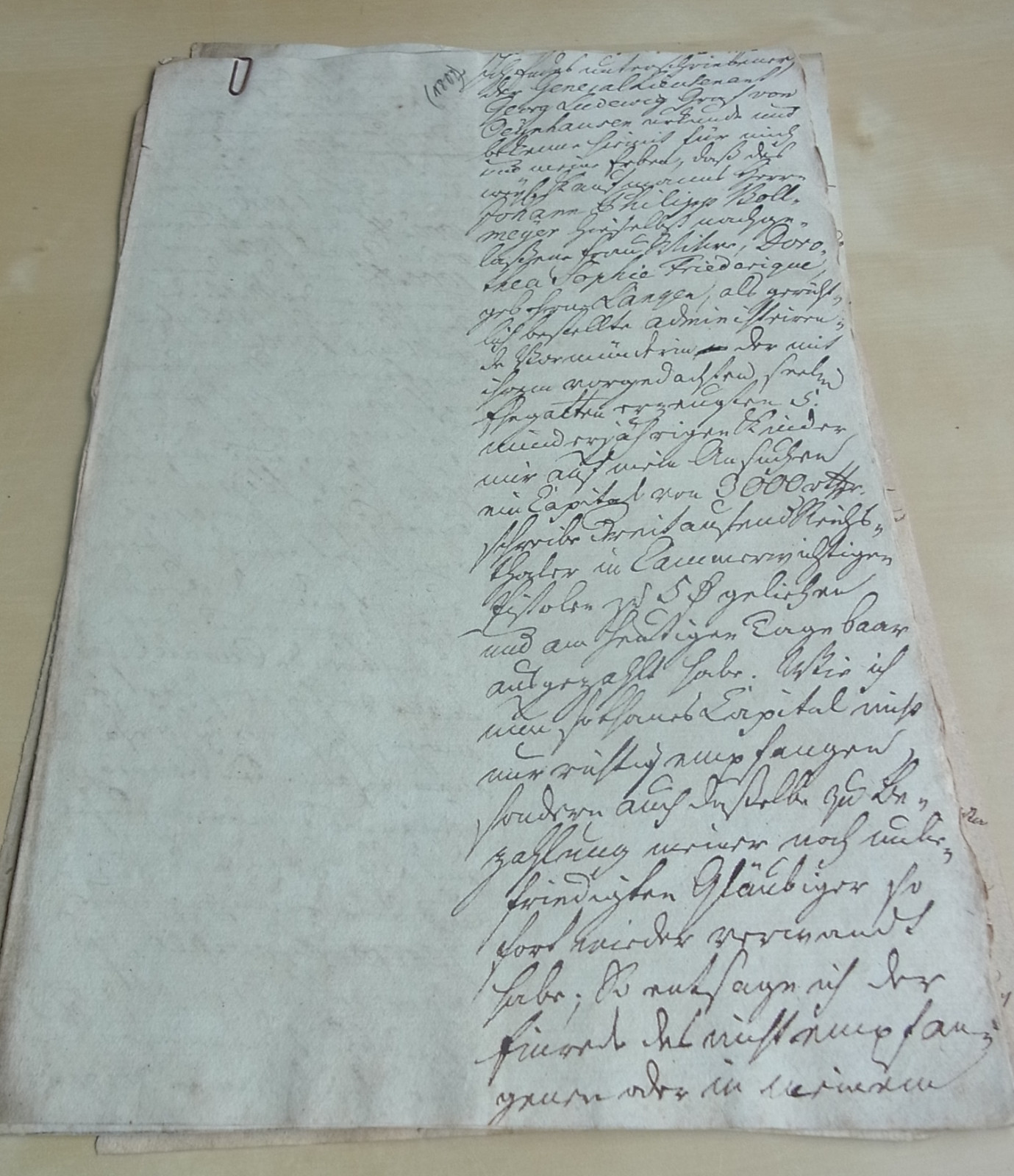
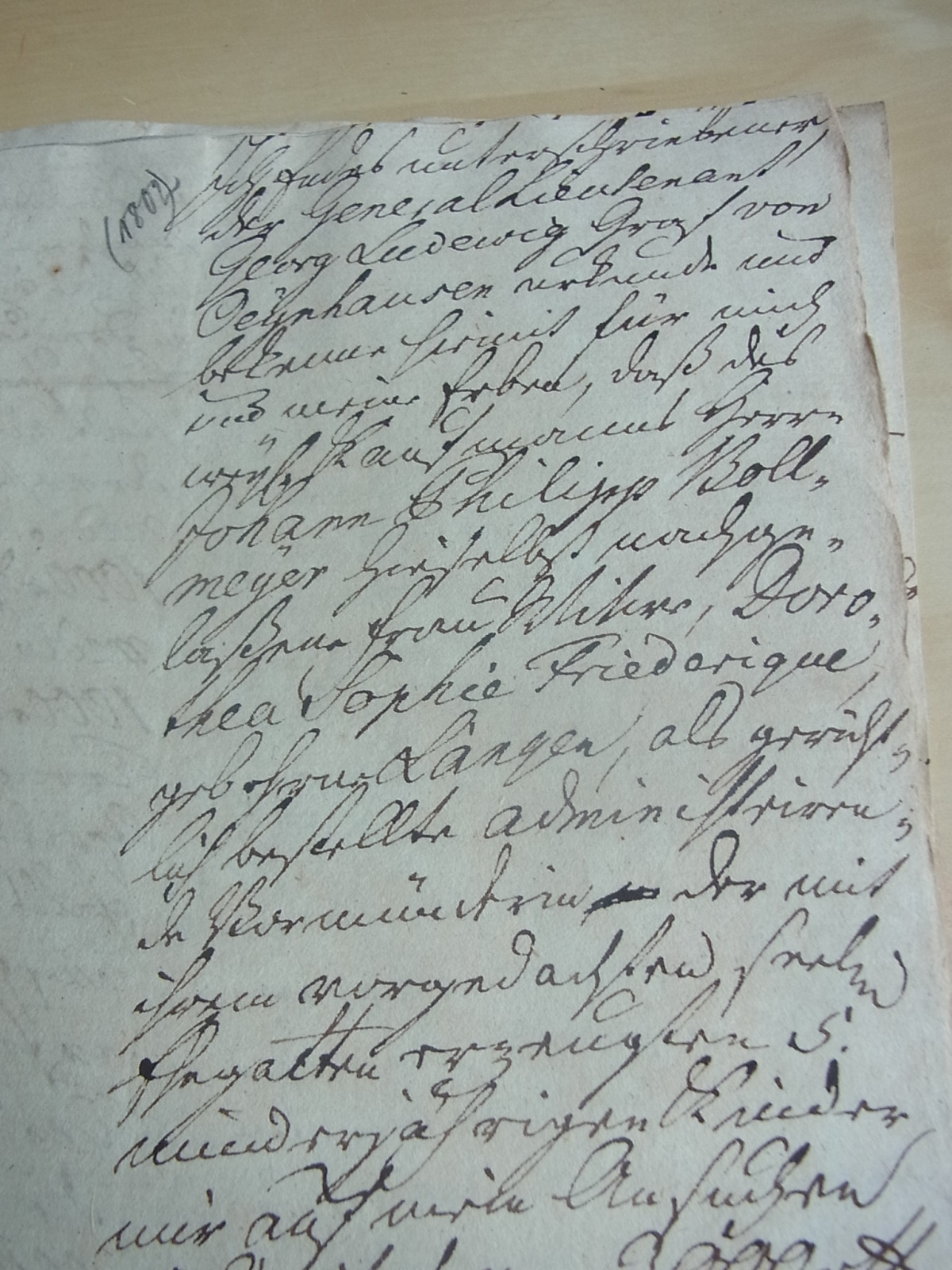
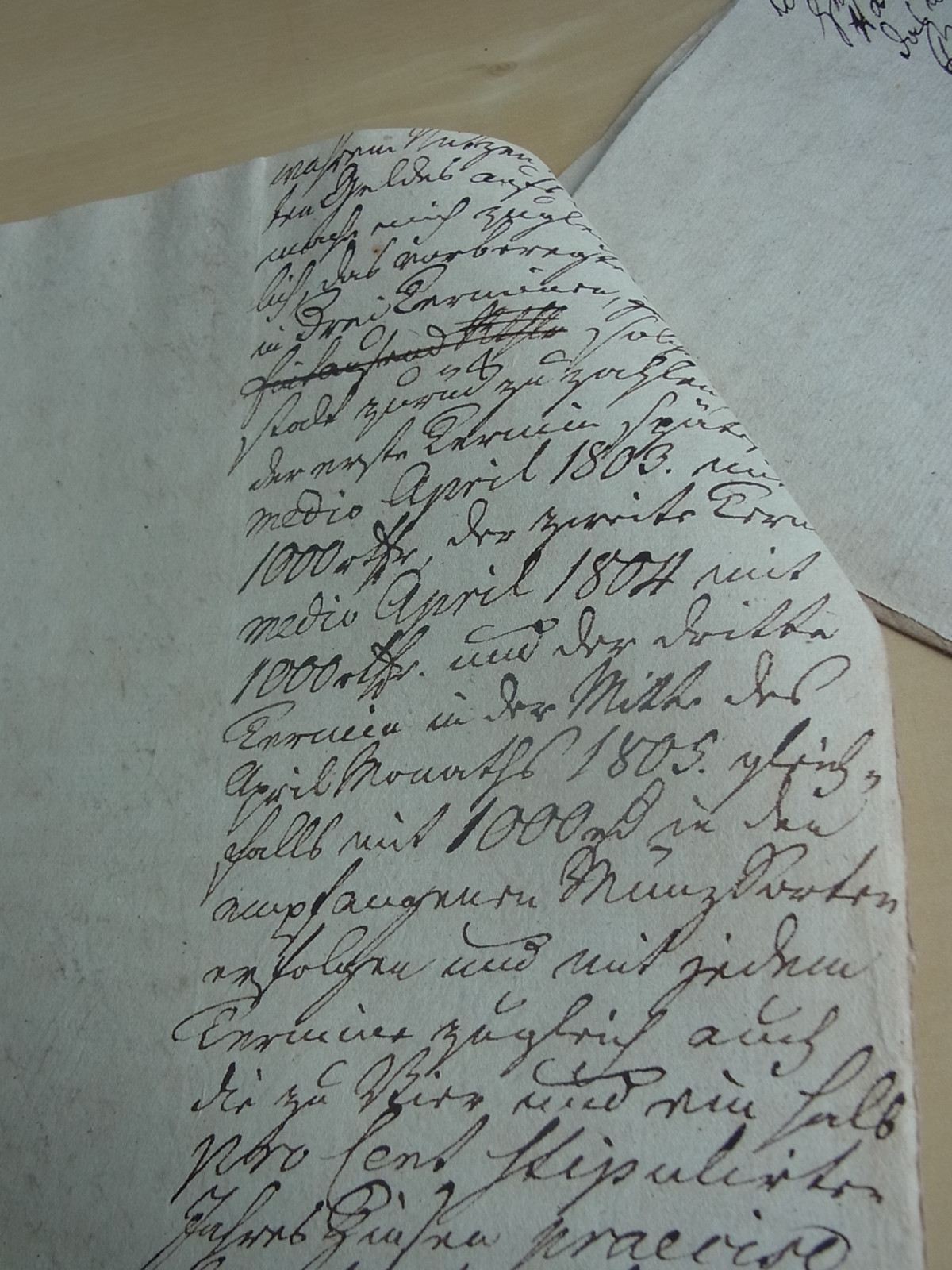
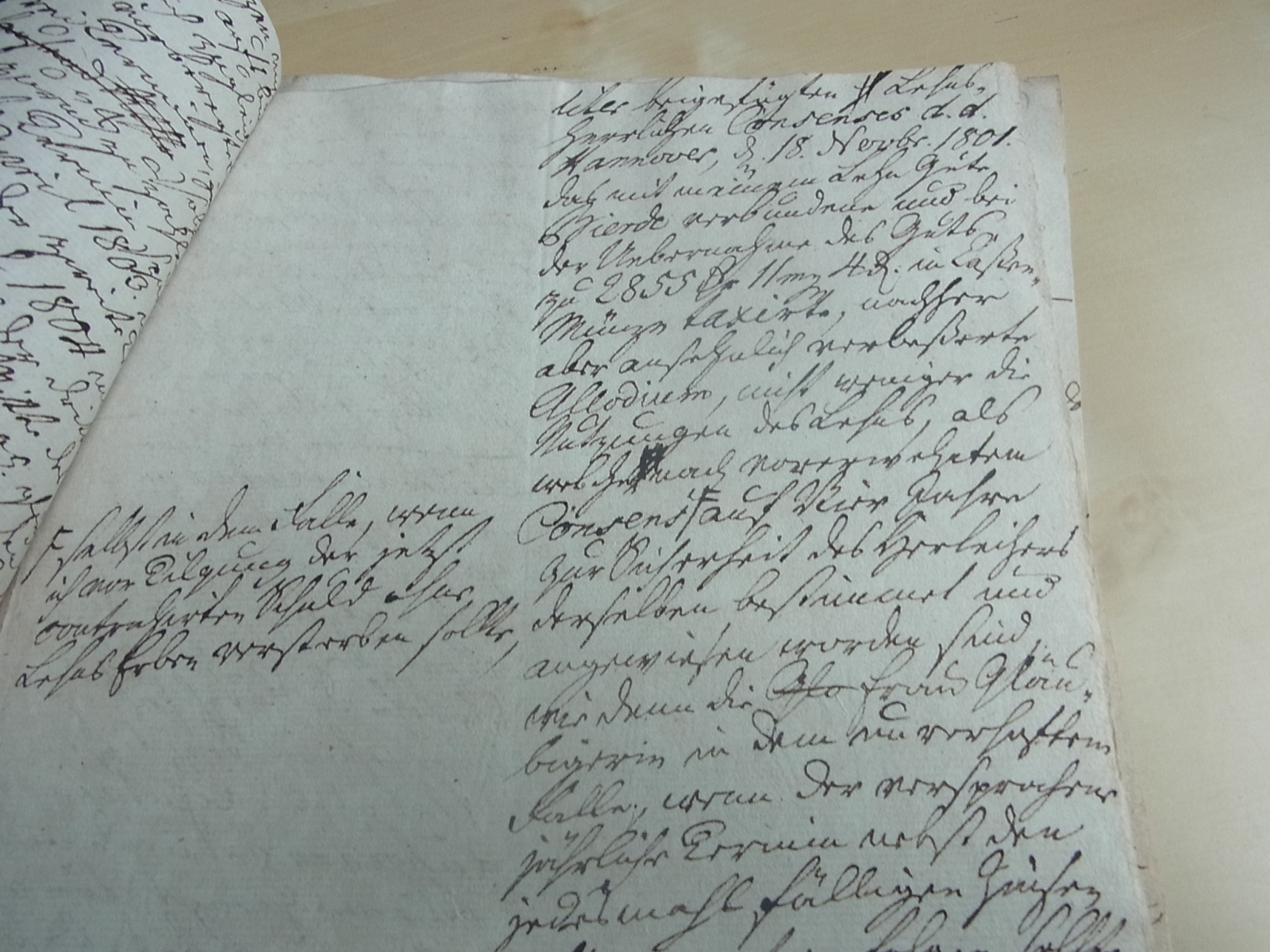



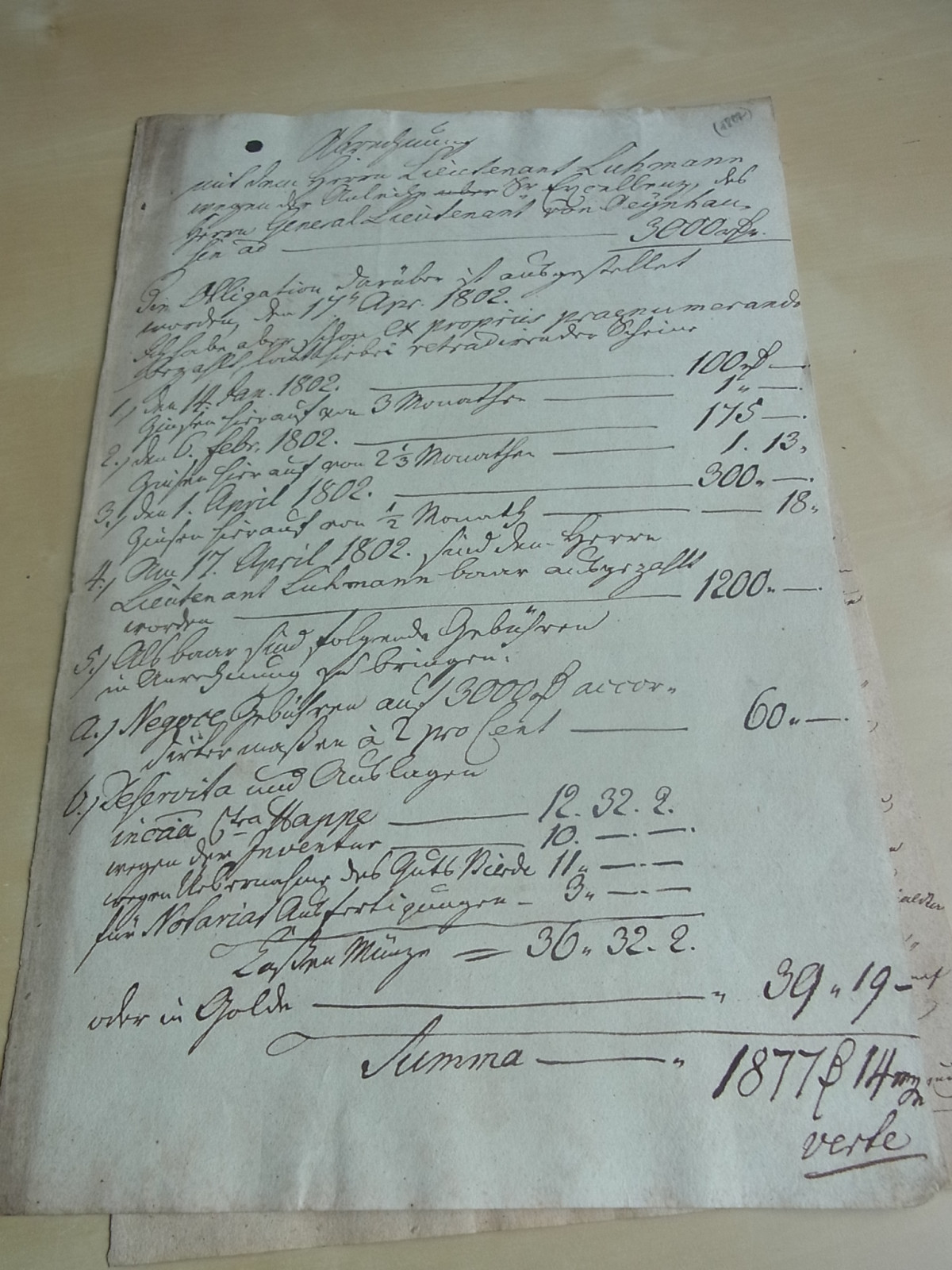

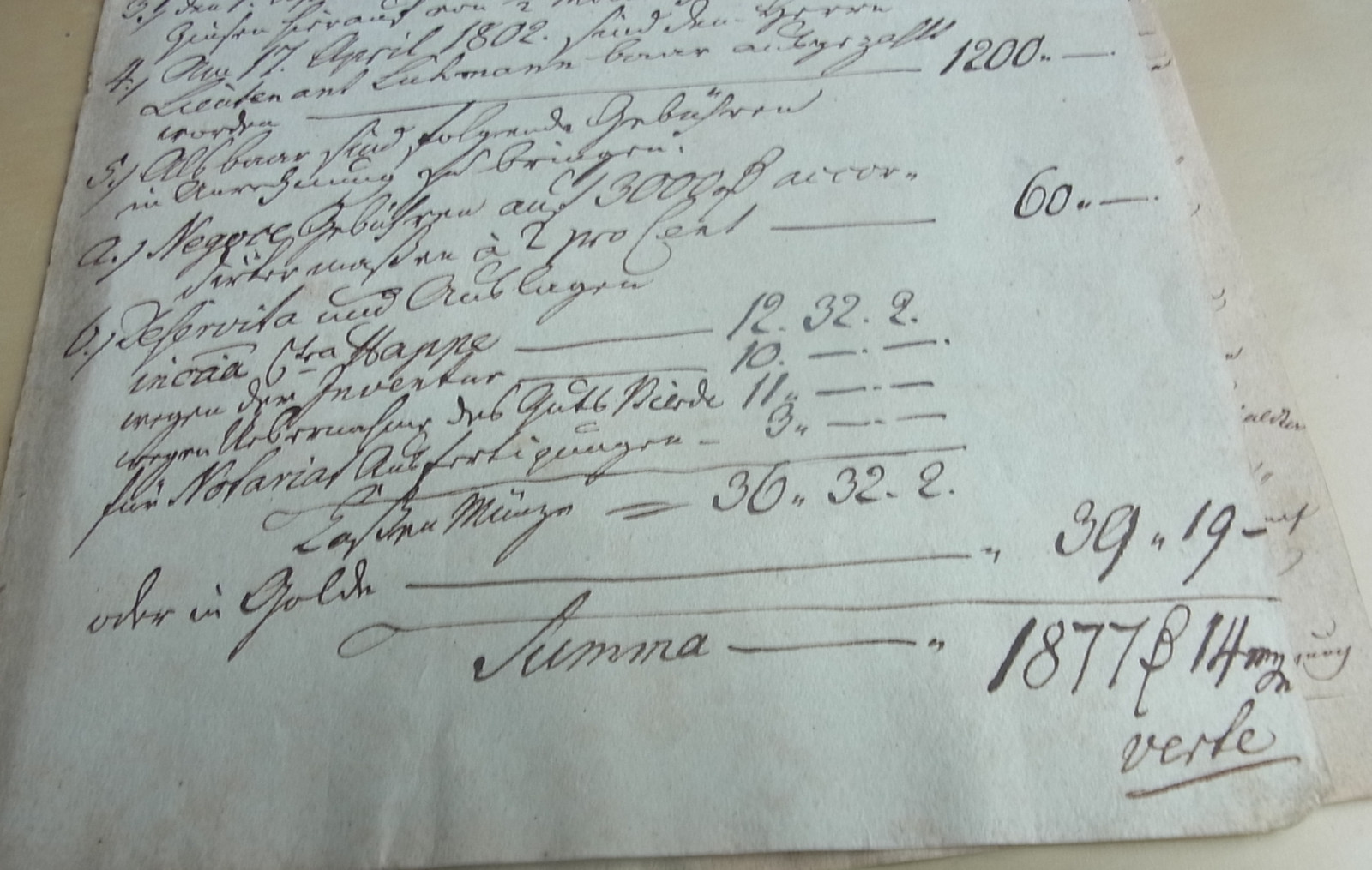

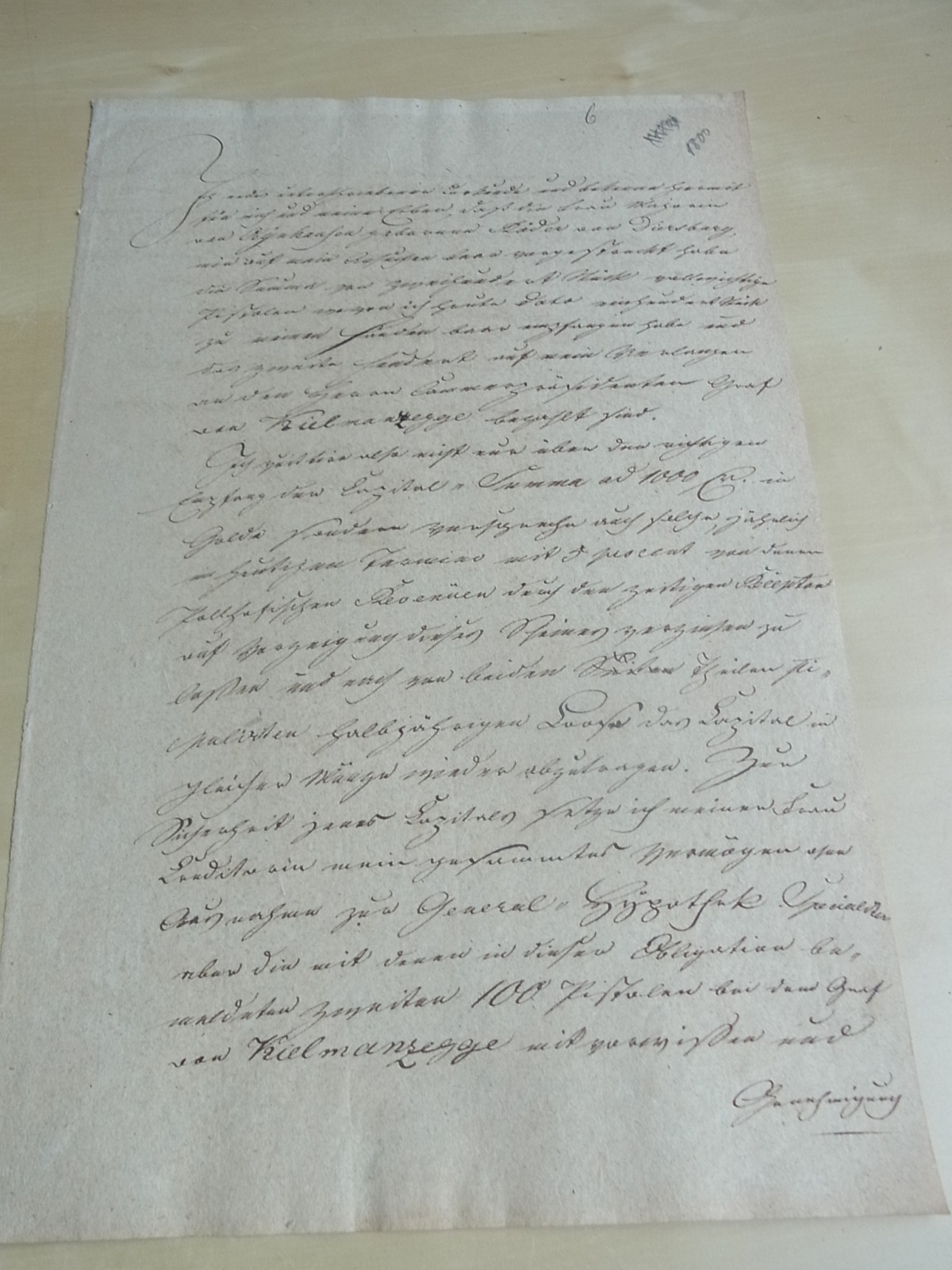
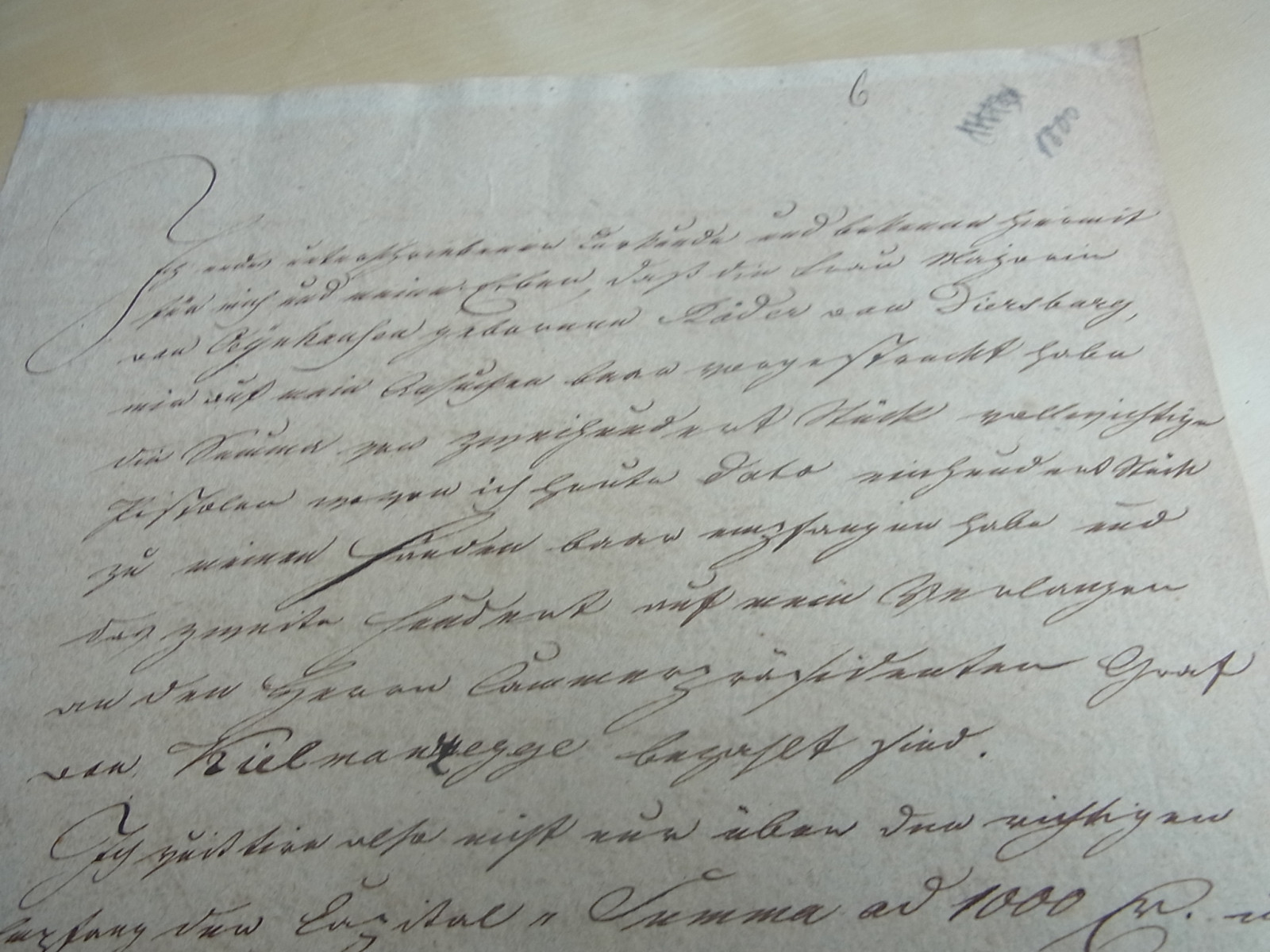

Mobile-friendly galleries at TRIXUM.DE
About Georg Ludwig von Oeynhausen (source: wikipedia):
Count Georg Ludwig von Oeynhausen (* 10. May 1734; † 11 March 1811 on Gut Bierde near Walsrode) was a lieutenant general in Brunswick-Lüneburg and head of the 7th Cavalry Regiment (Dragons). He was also the founder of the Count's line to Hamelin.
His father was the Oberjägermeister and Major General Count Friedrich Ulrich von Oeynhausen (* 11. June 1695; † 5 April 1776), his mother's wife Friederike Wilhelmine de Lorraine called de Beauvernois (* 13. October 1702; † 18 December 1751).
life: He joined the foot guard as an ensign in 1748 and was awarded in the unfortunate battle of Hastenbeck on 26 April 1748. July 1757 baptism of fire. Soon after, he was transferred to the Life Guards on horseback as a lieutenant captain and took part in the Seven Years' War in various positions, some at the front and some as an adjutant. In the Battle of Minden on 1. August 1759 he was aide-de-camp to the Commander-in-Chief Duke Ferdinand of Brunswick, later his personal adjutant. In the war against France in the Netherlands, to which the electorate had provided an "auxiliary corps" since the spring of 1793, he enlisted as a major general with the life guard regiment.
He later commanded a cavalry brigade and fought at Famars (23. May) and Hondschoote (6–8. September). The new French commander-in-chief, Pichegru, opened the campaign of 1794 with a full-line attack; on 26. On April 1, General Bertin took the position of Moucron occupied by a Hanoverian detachment under General von Wangenheim, which covered the important Courtrai behind it. On the 27th. In the afternoon, Oeynhausen received the order to take over command of Wangenheim's troops instead of the seriously ill Wangenheim and to recapture that position "no matter what the cost". It was a difficult task. Oeynhausen remarked in his report to Feldzeugmeister Graf Clerfait that only his assurance that he would cover the flanks of the attacking troops "could make him free of charge for such a daring enterprise". He had only 3,600 men at his disposal, already badly battered by previous fighting. But they solved the task set for them brilliantly; in the early part of the 28th Having set out on April 1, Oeynhausen was in possession of the position by noon; not long afterwards Clerfait arrived with the reinforcements needed to hold it. The following day the position was lost again and the French were able to advance to Menin. There they came across General Rudolf von Hammerstein.
Later Oeynhausen was commissioned with a shipment to England. Most recently he was lieutenant general and chief of the 7th Cavalry regiments, dragoons, with a garrison in Nienburg an der Weser. After the army was disbanded in the summer of 1803 as a result of the country being occupied by the French, he retired to his Bierde estate near Walsrode in Lüneburg, where he died on 11 August 1803. March 1811 died.
family
In 1763 he married Karoline Christiane Spiegel zu Peckelsheim (* 18. Sep 1739; † 25 December 1796). The couple had the following children:
Friederike Melosine Ernestine Henriette (* 25. Aug 1764; † 14 November 1799), conventual in the Marienwerder monastery
Sophie Ferdinandine Luise Wilhelmine (born 27. December 1765; † 1802) ⚭ Henri Maximilian de Tulliers, Imperial Count of Mentjoie-Froberg (b. July 1765; † 19 July 1809)
Carolina Christiane Wilhelmina (born 21. December 1766; † 24 February 1827) ⚭ 1791 Christian Friedrich Rudolf Freiherr von Geltingen (* 19. Nov 1764; † 21 February 1820)
Charlotte Antoinette Friederike (* March 21, 1768; † 6. December 1842) ⚭ Johann Wilhelm Reinhard von Künsberg (* 1757; † 25. September 1829), Nassau Oberhofmarschall
Carl Friedrich Wilhelm (* 16. Sep 1769; † 4 November 1794 before Nijmegen), Hanoverian cavalry captain
Luise Sophie Johanna (* 17. March 1771; † 5 March 1828) ⚭ 1792 Georg Ernst Count Grote Reichsfreiherr von Schauen (* 12. March 1764; † 12 December 1850) (Louis Grote's parents to watch)
Ernst Wilhelm Albrecht August (born 9. July 1772; † 14 March 1807)
Sophia Caroline Sabine Eleonore Elisabeth (* 18./19. February 1774; † 28 July 1784)
Antoinette Sophia Christiane Luise (* 29. December 1776; † 15 January 1801)
a second wife was Eleonore Sophia Maria Kirchmann (* 15. December 1765; † 28 February 1828). The couple had the following son:
Georg Ludwig (Louis) (* 1. April 1801; † 21 February 1863) Hanoverian major
⚭ 1828 Auguste Charlotte Wilhelmine Elisabeth von Reden (* 25. January 1808; † 15 September 1832)
⚭ 1835 Susanne Ernestine Sophia of Oldershausen (* 15. December 1807; † 19 February 1870).
| Autogrammart | Schriftstück |
| Erscheinungsort | Nienburg |
| Region | Europa |
| Material | Papier |
| Sprache | Deutsch |
| Autor | Georg Ludwig von Oeynhausen |
| Original/Faksimile | Original |
| Genre | Recht |
| Eigenschaften | Erstausgabe |
| Eigenschaften | Signiert |
| Erscheinungsjahr | 1802 |
| Produktart | Handgeschriebenes Manuskript |